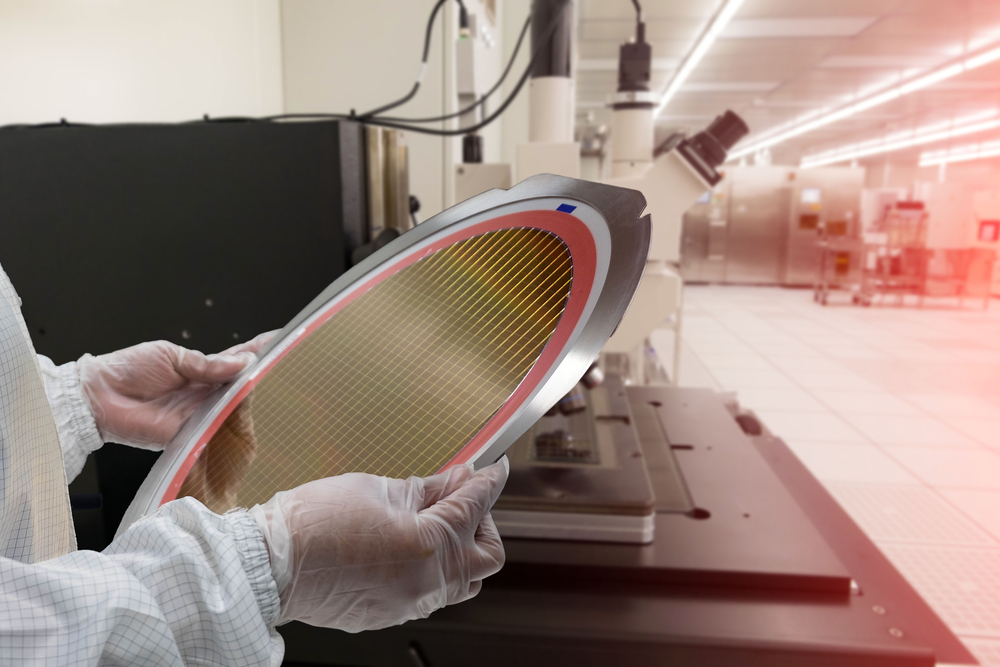China Pumps $2.2B Into Local Chipmaker After US Takes TSMC From Huawei

The South China Morning Post reported Sunday that China has injected a hefty sum of money into Semiconductor Manufacturing International Corporation (SMIC), the country's largest domestic chipmaker. The $2.2 billion investment comes on the heels of Nikkei Asian Review reporting that Taiwan Semiconductor Manufacturing Company (TSMC) isn't taking any new orders from Huawei.
On Friday, the U.S. Department of Commerce announced restrictions that limit "Huawei’s ability to use U.S. technology and software to design and manufacture its semiconductors abroad" and "cuts off Huawei’s efforts to undermine U.S. export controls."
Given the ongoing tension between the U.S. and China, this wasn't too surprising. Huawei had already reportedly put in significant 14nm orders with SMIC. Citing a source familiar with the matter, Nikkei Asian Review reported that orders placed before the ban shouldn't be affected, and TSMC will ship those orders before the middle of September.
As per the U.S. Commerce Department's announcement, non-U.S. chipmakers that rely on U.S. manufacturing equipment, IP or design software must apply for an export license to sell to Huawei or its 114 subsidiaries. TSMC recently announced its plans to build and operate a state-of-the-art 5nm fab in Arizona. However, the plant probably won't be enough to persuade the U.S. to grant TSMC a license.
Halting business between Huawei and TSMC could ultimately end up severing the relationship between the two companies. Huawei is TSMC's second biggest customer behind Apple. According to numbers from Bernstein Research, Huawei represented 15-20% of TSMC's annual revenue. TSMC will likely survive without Huawei since the foundry has many A-list clients; however, the foundry's revenue will almost certainly take a hit.
TSMC's shoes won't be easy to fill either. The foundry manufactured a lot of products for Huawei, including mobile processors, AI processors and networking chips. But as the saying goes, one man's loss is another man's gain, and it looks like it's time for SMIC to step up.
Bernstein Research estimated that up to 20% of SMIC's revenue already comes from Huawei. We can expect Huawei's piece of the pie to increase significantly. The Chinese fab currently produces 6,000 14nm wafers a month but plans to get that number up to 35,000.
Get Tom's Hardware's best news and in-depth reviews, straight to your inbox.

Zhiye Liu is a news editor, memory reviewer, and SSD tester at Tom’s Hardware. Although he loves everything that’s hardware, he has a soft spot for CPUs, GPUs, and RAM.
-
daworstplaya This is great news. Its about time a country took a stand against these technology thieves.Reply -
gg83 We were the ones who let them take it in a way. We're attracted by the cheap manufacturing costs. It happened to schwin bicycle back in the day.Reply -
digitalgriffin I wonder if Huawei was using 7nm nodes at TSMC. 14nm will hurt them. Im also surprised they didnt go GloFo. They have excess capacity on the 14nm node last I heard.Reply -
travsb1984 Reply
If the US wouldn't let them use TSMC, why would they let them go to Global Foundries?digitalgriffin said:I wonder if Huawei was using 7nm nodes at TSMC. 14nm will hurt them. Im also surprised they didnt go GloFo. They have excess capacity on the 14nm node last I heard. -
vinay2070 No matter what people say, this is making China more independent of the west, eventually making it further more powerful.Reply -
digitalgriffin Replyvinay2070 said:No matter what people say, this is making China more independent of the west, eventually making it further more powerful.
Well then good for them. It also makes us more independent of their untrustworthy tails. It's time they stopped feeding off our teet, while stabbing us in the back at the same time. China was NEVER our friend. They like most communist countries are an Oligarchy. That's where a few at the top benefit because they set the rules, while everyone at the bottom suffers from said oppressive rules.
What we have is a mutually beneficial relationship where China insist on becoming more and more aggressive over time. That beneficial relationship is waning because their government and industry don't like to play fair. -
watzupken This will surely slow China down technologically, but may also increase the cyber attacks from them to gain access to information of technology IPs. I am sure China will get better over time with government backing and funding, but in the mean time, this is going to be a big problem. The money that is being pumped to SMIC will not immediately be useful since they may be lacking the expertise at this point and will take years of trial and error and learning before the investment can see any tangible benefits.Reply -
digitalgriffin Replywatzupken said:This will surely slow China down technologically, but may also increase the cyber attacks from them to gain access to information of technology IPs. I am sure China will get better over time with government backing and funding, but in the mean time, this is going to be a big problem. The money that is being pumped to SMIC will not immediately be useful since they may be lacking the expertise at this point and will take years of trial and error and learning before the investment can see any tangible benefits.
Do you give a child an ice cream cone to silence them when they throw a tantrum? What will that teach them?
So what if they up the cyber attacks? They would steal everything now if they could.
What you are suggesting is to give them the ice cream cone to make them behave a little better out of fear of a tantrum. But the truth is they won't change. North Korea and Iran both do this. They don't change. They have their own agenda, no matter what.
Why do you think China sent diplomats to Africa to spread disinformation about the USA? (They told Africa we invented AID's to get rid of Africans) No it was to gain an unfair advantage to African resources. Why do you think theres a massive disinformation campaign now to make their own people and other parts of the world think the USA was responsible for coronavirus? It's all cat and mouse. -
DZIrl Thanks to US and their enormous greed China is now tech power and this will make them stronger and more independent.Reply
BTW, China can put US on knees without much problem. Do not forget 90% of world production is in China. China owns 1.2+ trillions of US debt (as Japan). Learn from Covid when China sent supplies to EU and US! Months later not much changed in US, EU. -
nofanneeded Replydaworstplaya said:This is great news. Its about time a country took a stand against these technology thieves.
All are thiefs stop pretending US of A never stolen other countries Technologies... The major Spying happens from USA spying on every windows run PC in the Globe ... this includes spying on the industry and research of every company on the planet.